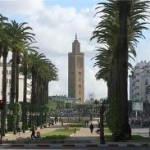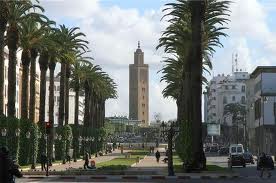By Souhail Karam
 RABAT (Reuters) – Morocco’s central bank cut its reserve requirements by a third on Tuesday to ease a chronic domestic liquidity squeeze amid slackening economic growth, while keeping its main interest rate unchanged at 3 percent.
RABAT (Reuters) – Morocco’s central bank cut its reserve requirements by a third on Tuesday to ease a chronic domestic liquidity squeeze amid slackening economic growth, while keeping its main interest rate unchanged at 3 percent.
“Noting the scope and sustained nature of liquidity shortage in the money market … the Board decided to reduce the required reserve ratio by 2 percentage points to 4 percent as of September 26,” Bank al-Maghrib said in a statement after its policy board’s quarterly meeting.
Governor Abdellatif Jouahri said the cut in reserve requirements – the first since March 2010 – would release 7 billion dirhams ($817 million) into the banking system, enough to cover a tenth of the latest liquidity shortage in the market.
The bank said it kept its main interest rate on hold as the balance of risks in the economy was broadly neutral and its main inflation forecast was in line with its objective for price stability.
Apart from a 25 basis point rate cut in March this year, the central bank has left interest rates unchanged for the past three years.
Jouahri said inflation should average 1.4 percent in 2012 and rise to 1.9-2.4 percent in 2013, up from less than 1 percent in 2011. Consumer inflation dropped to an annual 1 percent in August.
He reiterated a forecast for economic growth below 3 percent in 2012, while the government expects it to be around 3.4 percent.
Morocco has been hit by drought and the economic slowdown in the European Union, its main trading partner. Europe is the main source of tourists for Morocco and also of money transfers from the 2 million Moroccans living in Europe.
“Global economic conditions (since the bank’s last quarterly meeting) have worsened … What lies ahead may spell more difficulties,” Jouahri said, noting that tourism and migrant receipts, originating mostly from Europe, fell 5 and 1.8 percent in the 12 months to the end of August, respectively.
Anxious to avoid the kind of unrest seen in other parts of the Arab world and worried about increases in global commodity prices, Rabat last year raised public sector wages and has more than trebled funds for food and energy subsidies to over $6 billion.
Morocco ended 2011 with fiscal and external deficits slightly above 6 percent of gross domestic product.
Jouahri said the budget deficit would stand at between 5 and 6 percent of GDP in 2012 versus 5 percent forecast by the budget minister. ($1 = 8.5682 Moroccan dirhams) (Reporting by Souhail Karam; editing by Patrick Graham)
.







